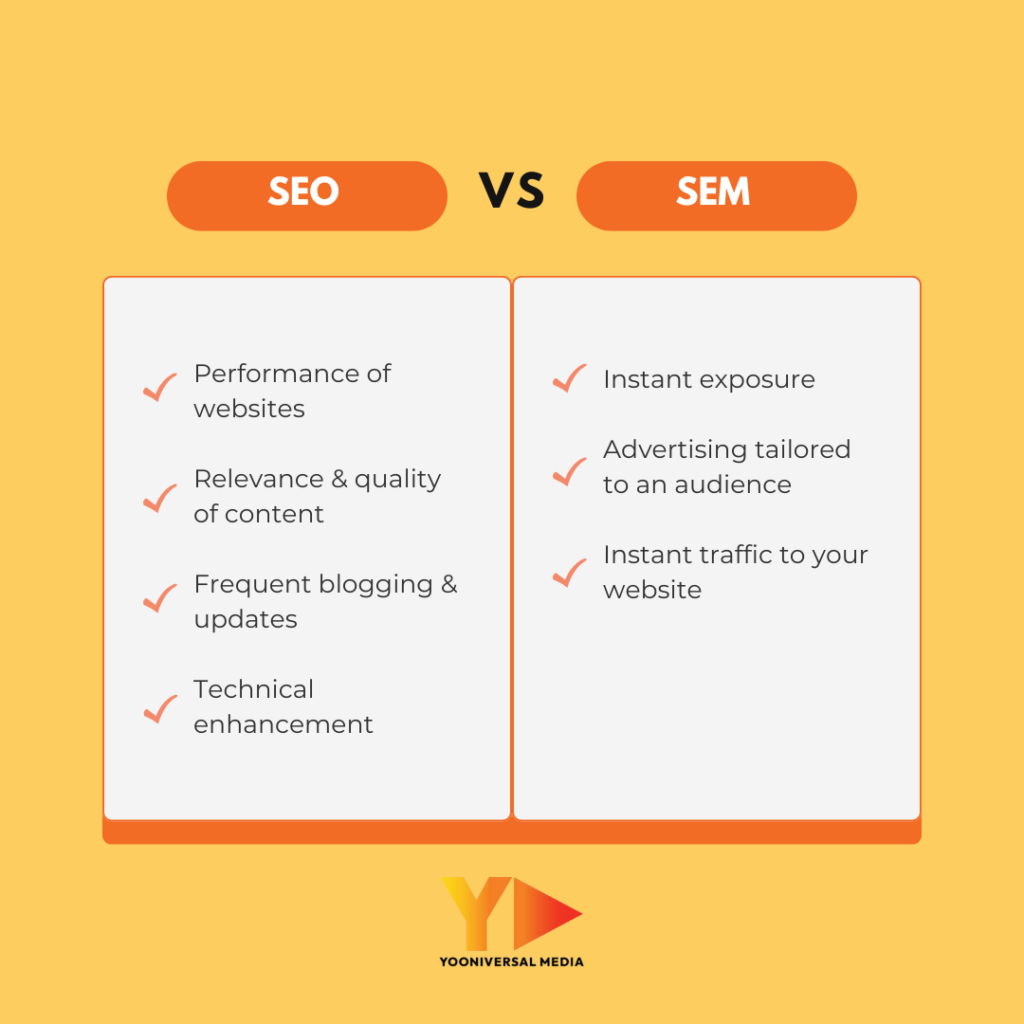Businesses must adjust their strategy as the digital marketing landscape continues to change as 2025 draws near. Search Engine Marketing (SEM) and Search Engine Optimization (SEO) are two important participants in this field. Incorporating keyword research, promoting products or services, and targeting the right audience are essential components of both strategies. Although each has advantages, it is unclear if you will require both to succeed in 2025.
Understanding SEO and SEM
SEO – The Long-Term Strategy
Enhancing your website’s natural rankings in search engine results is the main goal of SEO. It entails improving a number of elements of your website, such as:
- Performance of websites
- Relevance and quality of the content
- Frequent blogging and updates
- Technical enhancement
Incorporating a clear understanding of your target audience, optimizing for relevant search queries, and aligning with popular Google searches are crucial to a successful SEO strategy. Over time, SEO attracts visitors who favor organic search results by establishing credibility and trust. Although it takes patience and dedication, it can produce long-lasting, sustainable outcomes.
Learn more about: SEO – Basics and Things to Know
SEM – Immediate Visibility
Conversely, search engine marketing (SEM) is the term for paid search engine advertising, usually via Google Ads. It provides:

- Instant exposure for your company
- Advertising that is tailored to particular audiences
- Traffic to your website right away
By utilizing pay-per-click (PPC) strategies and well-structured ad campaigns, SEM can drive targeted traffic to your website. SEM may swiftly expose your company to potential clients and is especially useful for short-term initiatives.
Learn more about: SEM – What is Search Engine Marketing?
The Synergy of SEO and SEM
Even though SEM and SEO alone offer unique benefits, combining them results in a potent marketing plan. While SEO fosters long-term credibility and organic growth to rank higher in search results, SEM can offer instant visibility and drive traffic through paid ads. By using both strategies in a well-rounded SEM strategy, you can attract users who favor organic results as well as those who click on advertisements.
Looking Ahead to 2025
The convergence of SEO and SEM will become even more important as 2025 approaches. This is why you’ll probably require both:
- Comprehensive Search Presence: You may dominate search results by utilizing both SEO and SEM, showing up in both organic and sponsored rankings.
- Data Synergy: By identifying high-performing keywords, search volume, and user behavior trends, SEM data can help you guide your SEO strategy.
- Adapting to Algorithm Changes: Having a varied approach makes you more robust to changes in search engine algorithms.
- Keeping Short-Term and Long-Term Objectives in Balance: While SEO creates enduring authority and reputation, SEM offers short-term gains to attract potential customers.
- Taking into Account Diverse User Preferences: While some people prefer to click on advertisements, others place greater trust in organic results. By using both tactics, you can reach both groups and optimize for user experience.
Maximize Your Digital Marketing Strategy
SEO and SEM together will probably be the most successful digital marketing tactics in 2025. While SEO creates long-term credibility and sustainable organic growth, SEM provides instant visibility and targeted reach. Businesses may build a strong online presence that accommodates a range of user preferences, search habits, and user searches by utilizing both.
To optimize your web page and improve visibility across both organic and paid results, seek expert advice. Reach out today to create a customized SEO and SEM plan for your company in 2025. By speaking with digital marketing specialists, you can develop a well-rounded strategy that enhances your online presence, drives traffic, and promotes long-term growth.
